Death Railway Museum

Beez Neez now Chy Whella
Big Bear and Pepe Millard
Sat 9 Dec 2017 22:57
|
Death Railway Museum, Thanbyuzayat 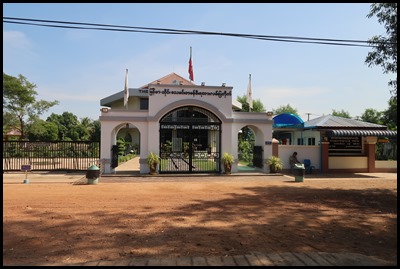 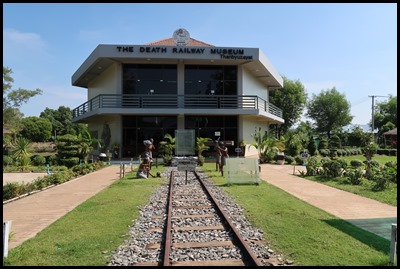 After our emotional visit to the War
Graves our driver dropped us outside the gates of the
Death Railway Museum. Criticised by many on various
forums, we came with an open mind. Certainly impressed so far.
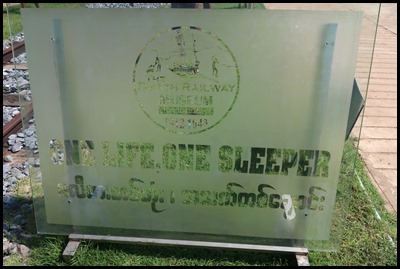 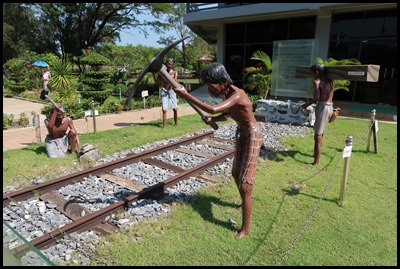 As we walked up the path, a very powerful
glass panel with the words One Life, One
Sleeper, beyond stood four emaciated railway
workers, frozen forever in toil.
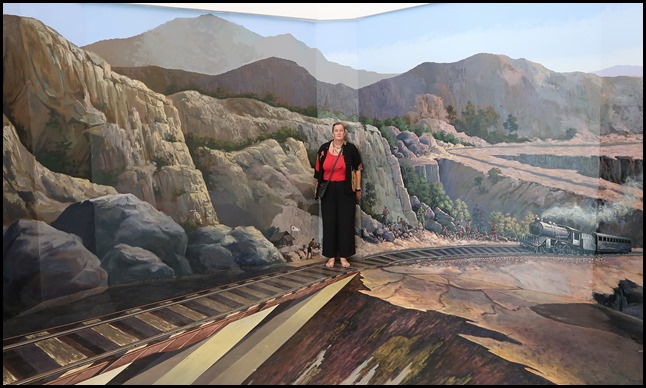 We walk in to find a massive wall and floor painting of the railway. Above right is a
television screen showing a film made by a brother and sister who walk the line
(or what’s left of it) in Thailand, a mammoth task in the heat, with few
directions but they meet loads of nice people along the way. Very
moving.
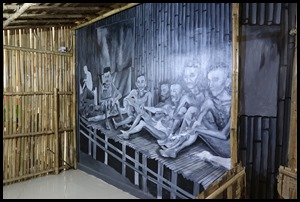 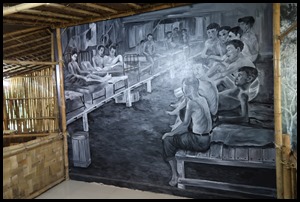 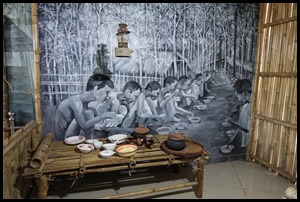 The next room is set
out like barracks with wall paintings.
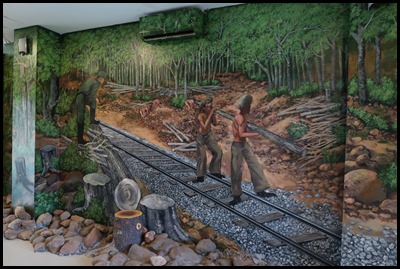 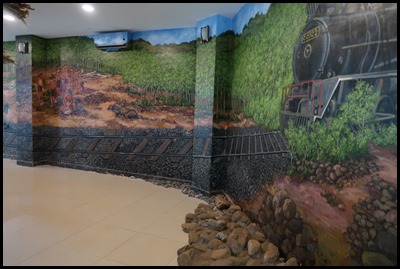 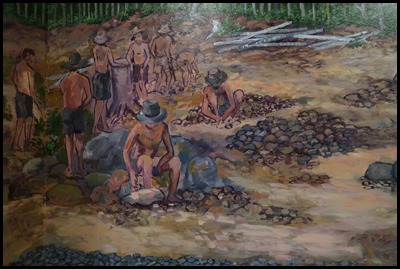 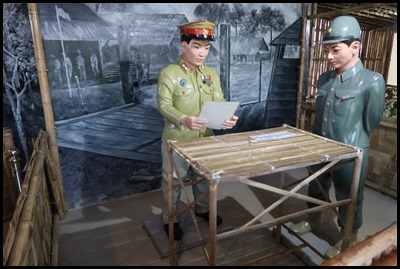 Along the back wall was a wall painting showing the railway and the air con units
were part of the painting. Further round from the emaciated soldiers was a
diorama depicting a Japanese officer and his
subordinate.
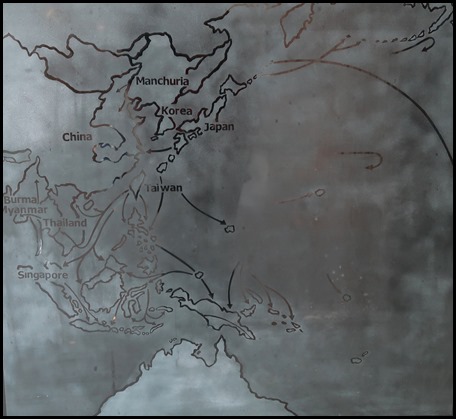 A glass information panel showed this map
and read: The Japanese Expansion
What was the ‘Greater East Asia
Co-Prosperity Sphere’ ?
This included countries such as
Australia, New Zealand, Malaysia, Burma (Myanmar), Thailand, French Indochina,
The Dutch East India.
Japan wanted these countries to be
part of its empire.
These countries held oil, tin and
rubber which were important resources for Japan to be
self-sufficient.
These countries would also serve as
markets for Japanese goods.
Japan used the term ‘Co-Prosperity’ to
get Asians to believe that all the countries in the sphere would benefit
economically through this arrangement.
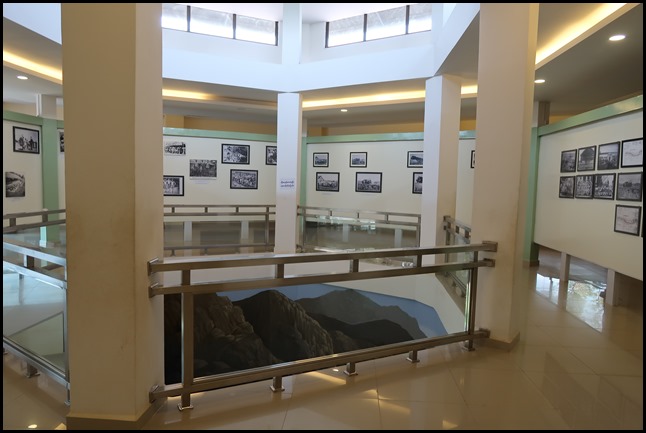 Upstairs, we
found many photographs of the time and behind them were two sets of glass
information boards that we have typed here – exactly as we saw them. The
mistakes do not detract from the message and are quite quaint in their own
way.
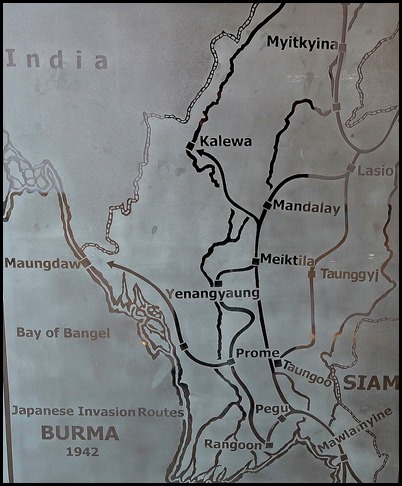 Constructing The
Railway
Purpose
There were four main purposes in
constructing the railway. They were:-
1. To transport ammunition in the
fight for the Greater Asia.
2. To transport Burma’s export and
import goods.
3. To build friendship with other
countries.
4. To make Burma
prosper.
To be able to accomplish the above
mention purpose, Workers Recruitments Group was formed and chaired by U Ba
Saw.
Planning
Surveyed by the British government of
Burma as early as 1885. In early 1942, Japanese forces invaded Burma. To supply
their forces in Burma, the Japanese depended upon the sea, bringing supplies and
troops to Burma through the Strait of Malacca and the Andaman Sea. This route
was vulnerable to be a tacked by Allied. To avoid it a railway from Bangkok to
Rangoon seemed a feasible alternative. The Japanese began the project in June
1942.
Constructing
After preliminary work of airfields
and infrastructure, construction of the railway began in Burma on 15 September
1942 and in Thailand in November. On 17 October 1943, construction gangs
originating in Burma met up with construction gangs originating in Thailand at
kilometer 263, about 18 km (11 mi) south of the Three Pagodas Pass. The
projected completed in December 1943.
Logistics
When the British left Burma in
1940-41, 2852 miles (4589 km) of rail-track were
left in Burma. Among those rail-track, Japan took 150 miles of track from
Yangon-Taungoo Duel Track and about 150 miles of track from Dadaroo-Myingyan and
other tracks.
Facts of the
Railway
The Death Railway was a 415-kilometre
(258 mi) railway between Ban Pong, Thailand, and Thanbyuzayat, Burma, built by
the Empire of Japan in 1943 to support its forces in the Burma campaign of World
War II. This railway completed the railroad between Bangkok, Thailand and
Rangoon, Burma (now Yangon). The line was closed in 1947.
More than 180,000 – possibly many more
– Asian civilian labourers (Romusha) and 60,000 Allied prisoners of war (POWs)
worked on the railway.
Of these, estimates of Romusha deaths
are little more than guesses, but probably about 90,000 died. 12,621 Allied POWs
died during the construction. The dead POWs included 6,904 British personnel,
2,802 Australians, 2,782 Dutch, and 133 Americans. 69 miles (111 km) of the
railway were in Burma and the remaining 189 (304 km) were in
Thailand.
 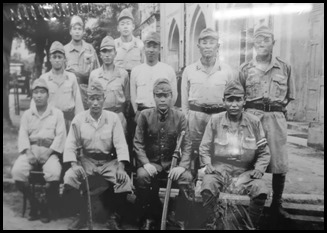 Invasion of Burma
(Myanmar)
The Japanese invasion was carried out
by General Shojiro Iida’s Fifteenth Army together with 30 comrades of Burma and
3,000 Mons who joined them at Bangkok. The main purpose was to cut the Burma
Road connecting to China. The invasion was followed by the signing of a treaty
of friendship on 14 December 1941 with Thailand. On the following day the first
Japanese troops entered Burma in the Kra Isthmus. The plan involved two main
thrusts. First the Southern Army would attack the southern tip of Burma to
occupy the British airfields, and then Gen. Iida would cross the border from
Reheng, and advance towards Rangoon. Japan would then be able to advance north
up the main Burmese river valleys.
The
Campaign
First
Phase
On 16 January 1942 a Japanese
battalion occupied Victoria Point (Kwak Thaung). Tavoy fell on 19 January. The
main Japanese invasion came from Raheng. They were blocked at Kawkareik.
Moulmein (Mawlamyine) fell on 31 January. The British retreat across the Sittang
on 19 February, and cross the river on the night of 21-22 February. On the
following morning two Japanese regiments attacked the bridgehead on the eastern
bank on the river. At 05:30 AM of 23 February, the bridge was blown. The British
pulled back to Pegu, half way to Rangoon. Pegu fell and a Japanese division was
closing in to the Yangon city on 5 March, sweeping around the city to the north
to attack from the west. The British realized that they couldn’t hold Rangoon,
and ordered an evacuation to leave along the road to Prome (Pyi), they ran into
a Japanese roadblock.
On 8 March, as the last British train
left Rangoon, the Japanese marched into the undefended city from the
west.
After the fall of Rangoon the fighting
died down. During the rest of March, both sides received reinforcements and
prepared for the second phase of the campaign – the inevitable Japanese attack
north into the heart of Burma.
Second
Phase
Serious fighting resumed in late
March. The Japanese advanced into the center, to Toungoo (30 March) and Mandalay
(1 May), and to the east, reaching Lashio (29 April), cutting the Burma Road. In
the west Japanese army advanced up the Irrawaddy against the British, forcing
them out of Prome (2 April) and Magwe (16 April). On 21 April, Alexander ordered
general retreat across the Irrawaddy, and on 26 April the British began their
long retreat back to the Indian border.
The British and Burmese lost 13,463
men during the campaign in Burma, while the Chinese may have lost as many as
40,000 men. Japanese losses were much lower, at 4,597 dead and wounded. The
battle in the air was a little more equal, with 116 aircrafts lost by the Allies
and a similar number by the Japanese.
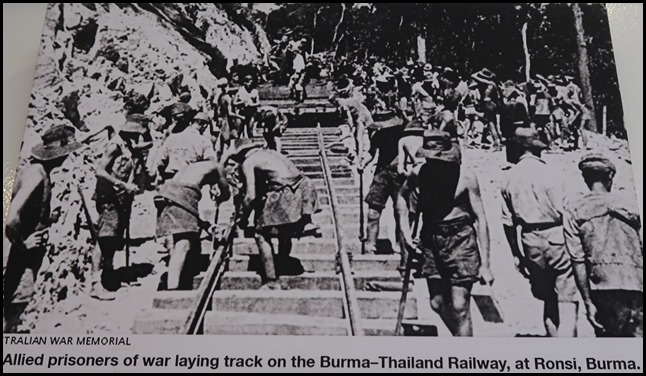 Workers (POWs and The Sweat
Army) Myanmar.
At first, workers were collected from
the nearby area but later the construction team asked for help from the Interim
Government of Burma (Myanmar) in mid December in 1942.
The ministry of information announced
to form a Sweat Army to construct the railway on 18th December 1942. The
announcement described that 20,000 workers are needed and the salary,
accommodation, medication and other opportunities and also called to enter into
the Sweat Army.
Workers were collected from Taunggoo,
Innsein, Hinthada, Pathein, Dawei, Myeik, Mawlamyine, Thaton, and Pegu area. Up
until February 1943, totally 13,950 workers were collected. This was just a
little more than half of the targeted numbers and a lot of workers ran away. The
15th Japanese Army have to fine ways to get the needed workers because the
railway needed to be finished in time. The Japanese Army discussed with Railway
construction team military head and administration department to recruit
voluntary workers in 1st March 1943. The 15th Japanese Army ordered to set up
the workforce and to transport them on 2nd March.
More 30,000 workers were recruited
until 9 March 1943 to work in Myanmar-Thailand railway. The Burmese (Myanmar))
Army was Blood Army and therefore the workers were named Sweat Army. They were
later named “Bama Let Yon Tart” (Bama’s Strength Army). The Minister of
Transportation and Irrigation, acted as chair of recruitment committee,
appointed the District Administrators as leaders of recruitment team and
recruited workers through the help of Township Administrators and Village Heads.
“ Doh Bama Sinyethar Aseayon” (We Burman Poors Association) also helped to
recruit workers. Military Administration provided 210,000 Kyats as a recruitment
cost. 32,204 voluntary workers were recruited within a short time and
transported as the first group. But there were a lot of workers running
away.
Therefore the the 15th Army hasto
discuss with military administration to recruit 21,000 more. The first
recruitment were done in nine different districts and the second recruitment was
done in Kyaukse, Maoobin, Minbu, Pakakku and Thayet districts. The recruitment
leaders were also extended from 1000 per one leader to 100 par one leader. The
second recruitment brought in 18,615 workers. Because of workers were running
away the 15th Japanese Army again have to ask for help in July 1943 to recruit
20,000 more workers. This time was recruited from Shwebo, Kathar and Monywa
districts and 21,069 more workers were recruited this time. A Patriot Youth
Group called Heihi was set up in Burma’s Japanese Armies HQ. The New Light of
Myanmar newspaper describe on 20th April 1943 to enter into Heiho. This Heiho
Army played a central role recruiting workers.
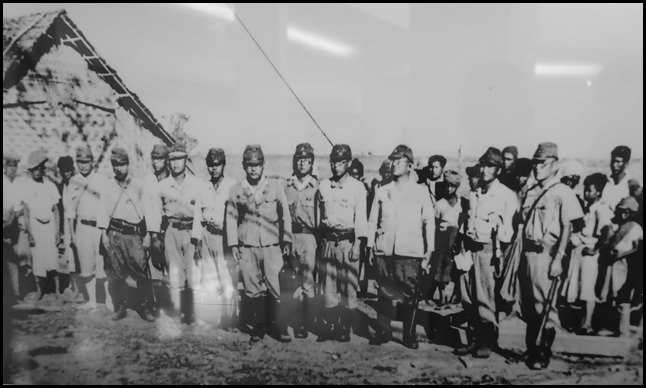 Japanese
12,000 Japanese soldiers, including
800 Koreans were employed on the railroad as engineers, guards, and supervisors, about 1,000 (8 percent) of them
died during the construction.
Romusha
The first prisoners of war, 3,000
Australians, to go to Burma departed Changi Prison in Singapore on 14 May 1942
and journeyed by sea to neat Thanbyuzayat, the northern terminus of the railway.
They worked on airfields and other infrastructure initially before beginning
construction of the railway in October 1942. In early 1943, the Japanese
advertised for workers in Malaya, Singapore and the Dutch East Indies, promising
good wages, short contracts, and housing for families. When that failed to
attract sufficient workers, they resorted to more coercive methods, rounding up
workers and impressing them, especially in Malaya. Approximately 90,000 Burmese
and 75,000 Malayans worked on the railroad. Other nationalities and ethnic
groups working on the railway were Tamil, Chinese, Karen, Javanese and
Singaporean Chinese.
Prisoners of
War
The first prisoners of war, 3,000
Australian, to go to Burma departed Changi Prison at Singapore on the 14th May
1942 and journeyed by sea to near Thanbyuzayat, the northern terminus of the
railway. They worked on airfields and other infrastructure initially before
beginning construction of the railway in October 1942. The first prisoners of
war to work in Thailand, 3,000 British soldiers, left Changi by train in June
1942 to Ban Pong, the southern terminus of the railway. More prisoners of war
were imported from Singapore and the Dutch East Indies as construction
advanced.
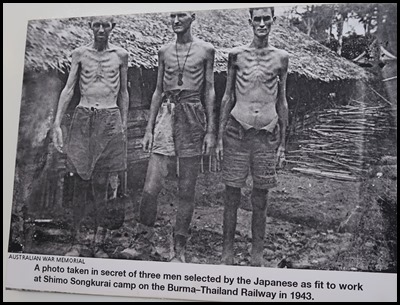 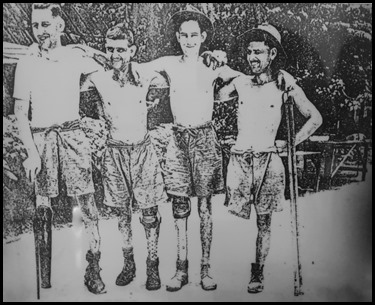 Conditions
The prisoners of war “found themselves
at the bottom of a social system that was harsh, punitive, fanatical and often
deadly. The living and working conditions on the Burma Railway were often
describes as “horrific”, with maltreatment, sickness, and
starvation.
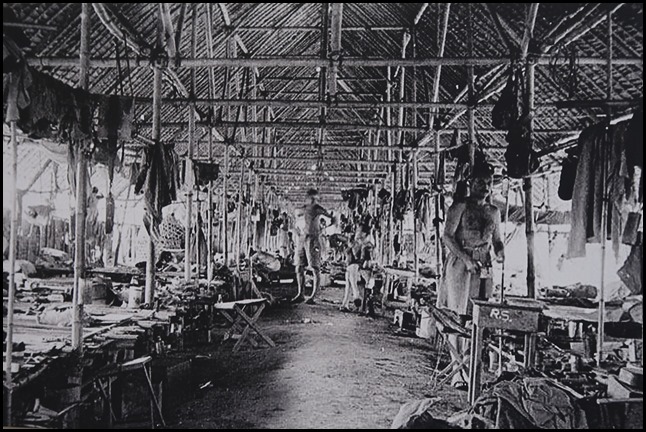 Living
Construction camps housed at least
1,000 workers. Each was established every five to ten miles (8 to 187 km) of the
route. The construction camps consisted of open sided barracks built of bamboo
poles with thatched roofs. The barracks were about sixty metres (66 yards) long
with sleeping platforms raised above the ground on each side of an earthen
floor. Two hundred men were housed in each barracks, giving each man a two-foot
wide space in which to live and sleep. Camps were usually named after the
kilometre where they were located.
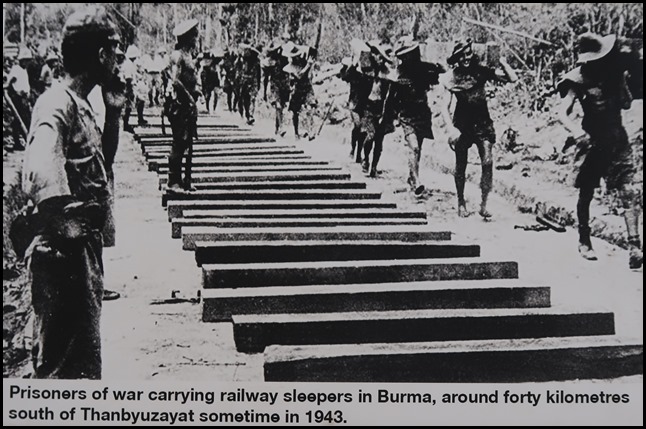 Working
Working conditions for the Romusha
were deadly. A British doctor said “the conditions in the coolie (Romusha) camps
downriver are terrible.....They are kept isolated from Japanese and British
camps. They have no latrines. Special British prisoner parties.....bury about
twenty coolies a day. These coolies have been brought under false pretence –
‘easy work, good pay, good houses!’ some have even brought wives and children.
Now they find themselves dumped in these charnel houses, driven and brutally
knocked about by the Jap and Korean guards, unable to buy extra food,
bewildered, sick, frightened. Yet many of them have shown extraordinary kindness
to sick British prisoners passing down the river, giving them sugar and helping
them into the railway trucks. The workers were moved up and down the railroad
according to the need of the construction. Moreover, the road was constructed
only with basic tools without any machine”.
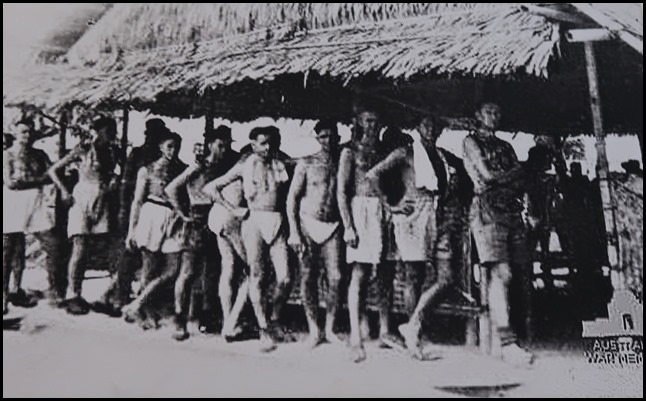 Health
In his book, Last Man Out, H. Robert
Charles, an American Marine survivor of the sinking of the USS Houston, writes
in depth about a Dutch doctor, Henri Hekking, a fellow POW who probably save the
lives of many who worked on the “Death Railway”. In the forward to Charles’s
book James D. Hornfischer summarises: “Dr. Henri Hekking was a tower of
psychological and emotional strength, almost shamanic in his power to find and
improvise medicines from the wild prison of the jungle”. Hekking died in 1994.
Charles died in December 2009.
Entertainment
One of the ways the Allied POWs kept
their spirits up was to ask one of the musicians in their midst to play his
guitar or accordion, or lead them in a group sing along, or request their camp
comedians to tell some jokes or put on a skit.
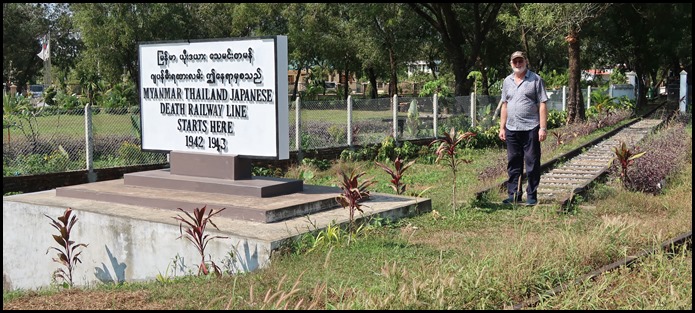 . . Outside, we walked to the end of the
of the track which now looks very benign. Just a few feet in front of it
is the main line.
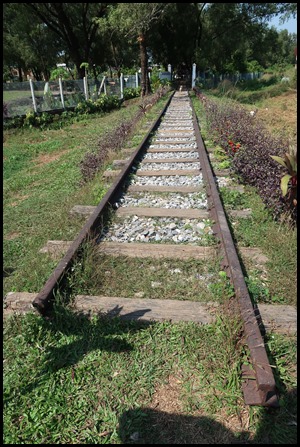 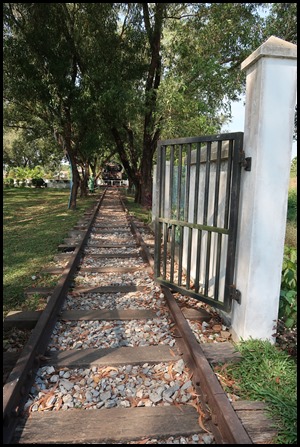 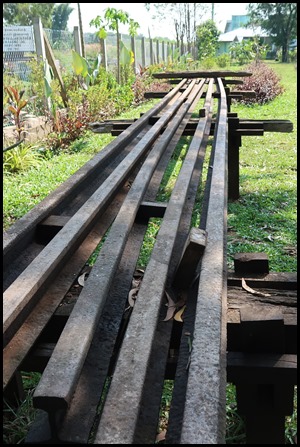 We walked back along the track to the perimeter gate,
passing a pile of bent and battered rails (originals)........
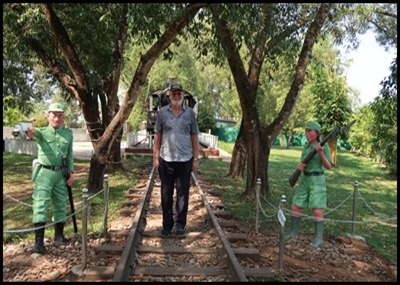 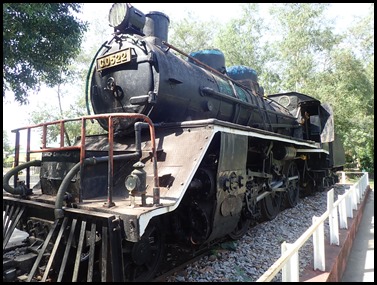 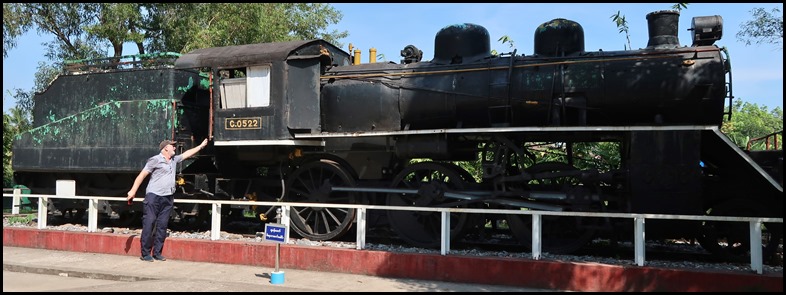 ........stopping by two statues of Japanese soldiers to stand beside C.O.522.
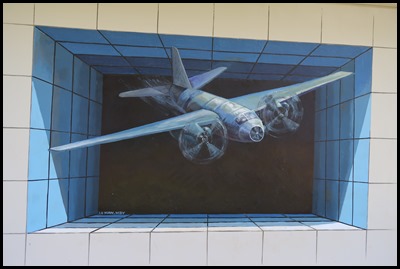 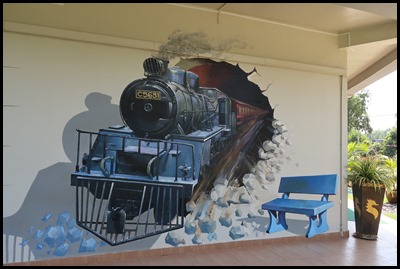 Heading back inside passing the outdoor wall
paintings.
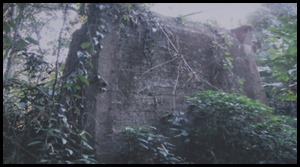 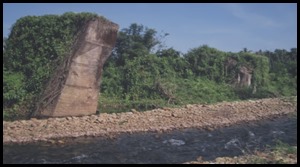 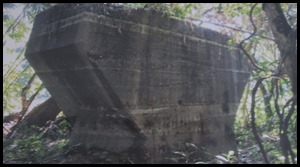 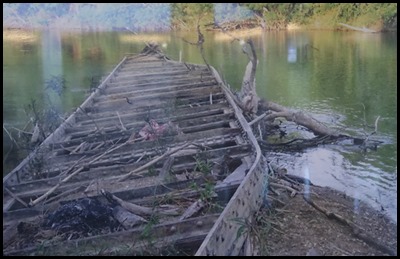 Pictures of sad.
remnants
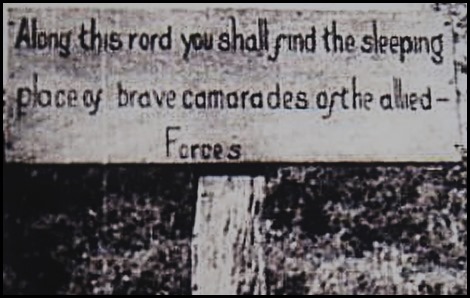 ALL IN ALL VERY WELL PUT TOGETHER
BEAUTIFULLY
PRESENTED |